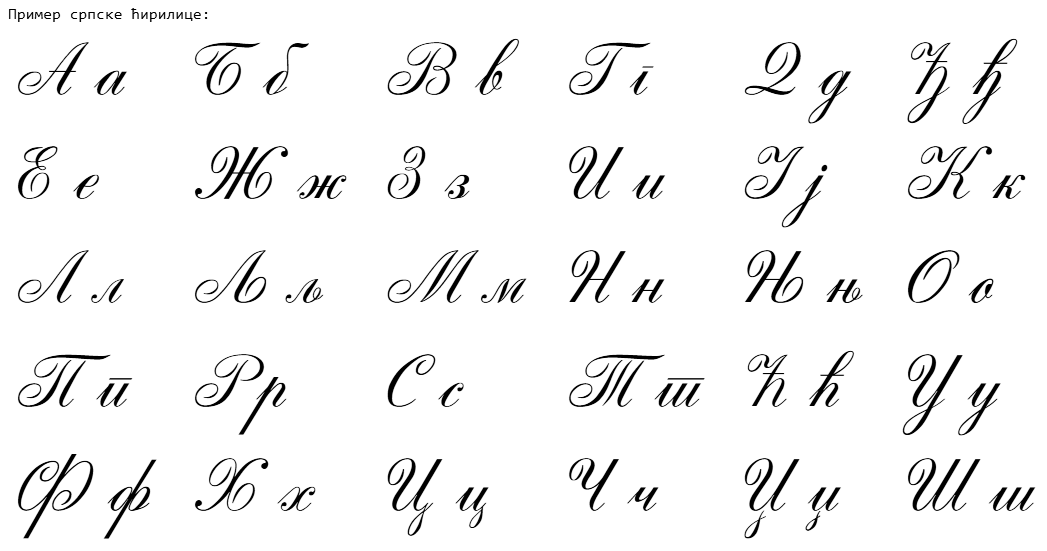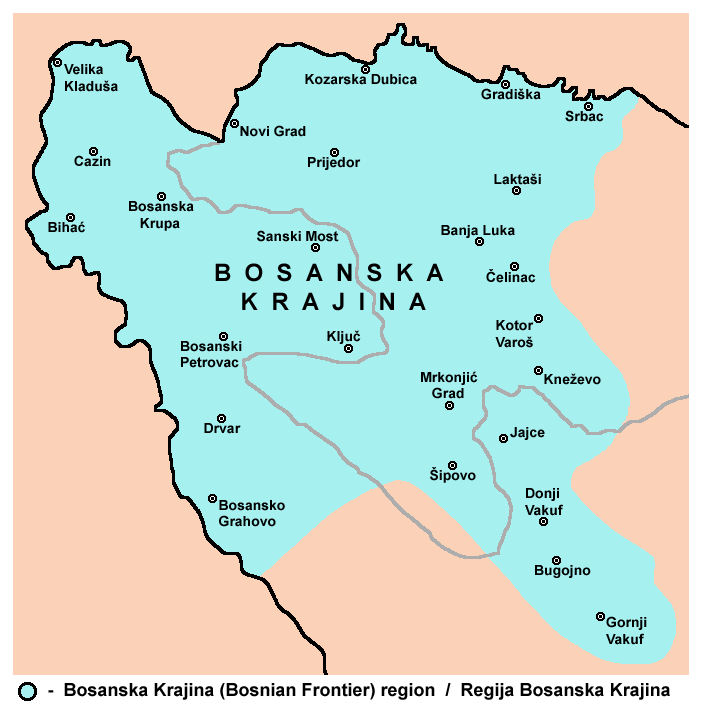|
Banj Brdo
Banj brdo (Serbian Cyrillic alphabet, Serbian Cyrillic: ''Бањ брдо'', which can be translated as ''Banj hill''), before known as Šehitluci (Serbian Cyrillic alphabet, Serbian Cyrillic: ''Шехитлуци'') is a 431 meter hill as well as tourist and recreation place in Banja Luka, part of the Bjeljavina mountain. On top of the hill stands the Monument to fallen Krajina soldiers, a work of Antun Augustinčić and dedicated to the dead soldiers of the World War II in Yugoslavia, People Liberation War in Bosanska Krajina. It is possible to see the whole city of Banja Luka from this place. The serpentine road on Banj brdo that leads to the monument was made between 1932 and 1933 and a small tourist bus between the top of the hill and the city of Banja Luka is circulating on it during the day (from April 22 to September 30). Name of the hill After the War in Bosnia, the name Šehitluci was changed into Banj brdo because of the etymology of the old name. The word ''šehitluc ... [...More Info...] [...Related Items...] OR: [Wikipedia] [Google] [Baidu] |
Serbian Cyrillic Alphabet
The Serbian Cyrillic alphabet ( sr, / , ) is a variation of the Cyrillic script used to write the Serbian language, updated in 1818 by Serbian linguist Vuk Stefanović Karadžić, Vuk Karadžić. It is one of the two alphabets used to write standard modern Serbian language, Serbian, the other being Gaj's Latin alphabet. Karadžić based his alphabet on the previous Slavonic-Serbian script, following the principle of "write as you speak and read as it is written", removing obsolete letters and letters representing iotified vowels, introducing from the Latin alphabet instead, and adding several consonant letters for sounds specific to Serbian phonology. During the same period, linguists led by Ljudevit Gaj adapted the Latin alphabet, in use in western South Slavic areas, using the same principles. As a result of this joint effort, Serbian Cyrillic and Gaj's Latin alphabets for Serbian-Croatian have a complete one-to-one congruence, with the Latin Digraph (orthography), digraph ... [...More Info...] [...Related Items...] OR: [Wikipedia] [Google] [Baidu] |
Banja Luka
Banja Luka ( sr-Cyrl, Бања Лука, ) or Banjaluka ( sr-Cyrl, Бањалука, ) is the second largest city in Bosnia and Herzegovina and the largest city of Republika Srpska. Banja Luka is also the ''de facto'' capital of this entity. It is the traditional centre of the densely-forested Bosanska Krajina region of northwestern Bosnia. , the city proper has a population of 138,963, while its administrative area comprises a total of 185,042 inhabitants. The city is home to the University of Banja Luka and University Clinical Center of the Republika Srpska, as well as numerous entity and state institutions for Republika Srpska and Bosnia and Herzegovina respectively. The city lies on the Vrbas river and is well known in the countries of the former Yugoslavia for being full of tree-lined avenues, boulevards, gardens, and parks. Banja Luka was designated European city of sport in 2018. Name The name ''Banja Luka'' was first mentioned in a document dated to 6 February 1494 b ... [...More Info...] [...Related Items...] OR: [Wikipedia] [Google] [Baidu] |
Monument To Fallen Krajina Soldiers
A monument is a type of structure that was explicitly created to commemorate a person or event, or which has become relevant to a social group as a part of their remembrance of historic times or cultural heritage, due to its artistic, historical, political, technical or architectural importance. Some of the first monuments were dolmens or menhirs, megalithic constructions built for religious or funerary purposes. Examples of monuments include statues, (war) memorials, historical buildings, archaeological sites, and cultural assets. If there is a public interest in its preservation, a monument can for example be listed as a UNESCO World Heritage Site. Etymology It is believed that the origin of the word "monument" comes from the Greek ''mnemosynon'' and the Latin ''moneo'', ''monere'', which means 'to remind', 'to advise' or 'to warn', however, it is also believed that the word monument originates from an Albanian word 'mani men' which in Albanian language means 'remembe ... [...More Info...] [...Related Items...] OR: [Wikipedia] [Google] [Baidu] |
Antun Augustinčić
Antun Augustinčić (4 May 1900 – 10 May 1979) was a Croatian sculptor active in Yugoslavia and the United States. Along with Ivan Meštrović and Frano Kršinić he is considered one of the three most important Croatian sculptors of the 20th century. His most notable sculptures include the ''Peace'' monument which stands in front of the United Nations building in New York City, the ''Miner'' statue in front of the International Labour Organization headquarters in Geneva, and the sculpture of Yugoslav president Josip Broz Tito, present in several copies throughout former Yugoslavia. Early life Augustinčić was born in the small town of Klanjec in the Hrvatsko Zagorje region in northern Croatia, which was at the time part of Austria-Hungary. In 1918 he enrolled at the Arts and Crafts College in Zagreb, where he studied sculpting under professors Rudolf Valdec and Robert Frangeš. After the college became the Royal Academy of Arts and Crafts in 1922, he studied under the guid ... [...More Info...] [...Related Items...] OR: [Wikipedia] [Google] [Baidu] |
World War II In Yugoslavia
World War II in the Kingdom of Yugoslavia began on 6 April 1941, when the country was swiftly conquered by Axis forces and partitioned between Germany, Italy, Hungary, Bulgaria and their client regimes. Shortly after Germany attacked the USSR on 22 June 1941, the communist-led republican Yugoslav Partisans, on orders from Moscow, launched a guerrilla liberation war fighting against the Axis forces and their locally established Puppet state, puppet regimes, including the Axis-allied Independent State of Croatia (NDH) and the Government of National Salvation in the Territory of the Military Commander in Serbia, German-occupied territory of Serbia. This was dubbed the National Liberation War and Socialist Revolution in post-war Yugoslav communist historiography. Simultaneously, a multi-side civil war was waged between the Yugoslav communist Partisans, the Serbian royalist Chetniks, the Axis-allied Croatian Ustaše and Croatian Home Guard (World War II), Home Guard, Serbian Volun ... [...More Info...] [...Related Items...] OR: [Wikipedia] [Google] [Baidu] |
Bosanska Krajina
Bosanska Krajina ( sr-cyrl, Босанска Крајина, ) is a geographical region, a subregion of Bosnia, in western Bosnia and Herzegovina. It is enclosed by a number of rivers, namely the Sava (north), Glina (northwest), Vrbanja and Vrbas (east and southeast, respectively). The region is also a historic, economic and cultural entity of Bosnia and Herzegovina, famous for its natural beauties and wildlife diversity. The largest city, and its historical center is Banja Luka. Other cities and towns include Bihać, Bosanska Krupa, Bosanski Petrovac, Bosansko Grahovo, Bužim, Cazin, Drvar, Gradiška, Ključ, Kostajnica, Kozarska Dubica, Laktaši, Mrkonjić Grad, Novi Grad, Prijedor, Sanski Most, Šipovo, Velika Kladuša. Bosanska Krajina is not a formal entity within the structure of Bosnia and Herzegovina; however it has a significant cultural and historical identity that was formed through several historic and economic events. The territory of Bosanska Krajina is curre ... [...More Info...] [...Related Items...] OR: [Wikipedia] [Google] [Baidu] |
War In Bosnia
The Bosnian War ( sh, Rat u Bosni i Hercegovini / Рат у Босни и Херцеговини) was an international armed conflict that took place in Bosnia and Herzegovina between 1992 and 1995. The war is commonly seen as having started on 6 April 1992, following a number of earlier violent incidents. The war ended on 14 December 1995 when the Dayton accords were signed. The main belligerents were the forces of the Republic of Bosnia and Herzegovina and those of Herzeg-Bosnia and Republika Srpska, proto-states led and supplied by Croatia and Serbia, respectively. The war was part of the breakup of Yugoslavia. Following the Slovenian and Croatian secessions from the Socialist Federal Republic of Yugoslavia in 1991, the multi-ethnic Socialist Republic of Bosnia and Herzegovina – which was inhabited by mainly Muslim Bosniaks (44%), Orthodox Serbs (32.5%) and Catholic Croats (17%) – passed a referendum for independence on 29 February 1992. Political representatives of the ... [...More Info...] [...Related Items...] OR: [Wikipedia] [Google] [Baidu] |
Turkish Language
Turkish ( , ), also referred to as Turkish of Turkey (''Türkiye Türkçesi''), is the most widely spoken of the Turkic languages, with around 80 to 90 million speakers. It is the national language of Turkey and Northern Cyprus. Significant smaller groups of Turkish speakers also exist in Iraq, Syria, Germany, Austria, Bulgaria, North Macedonia, Greece, the Caucasus, and other parts of Europe and Central Asia. Cyprus has requested the European Union to add Turkish as an official language, even though Turkey is not a member state. Turkish is the 13th most spoken language in the world. To the west, the influence of Ottoman Turkish—the variety of the Turkish language that was used as the administrative and literary language of the Ottoman Empire—spread as the Ottoman Empire expanded. In 1928, as one of Atatürk's Reforms in the early years of the Republic of Turkey, the Ottoman Turkish alphabet was replaced with a Latin alphabet. The distinctive characteristics of the Turk ... [...More Info...] [...Related Items...] OR: [Wikipedia] [Google] [Baidu] |
Shahid
''Shaheed'' ( , , ; pa, ਸ਼ਹੀਦ) denotes a martyr in Islam. The word is used frequently in the Quran in the generic sense of "witness" but only once in the sense of "martyr" (i.e. one who dies for his faith); the latter sense acquires wider usage in the ''hadith''. The term is commonly used as a posthumous title for those who are considered to have accepted or even consciously sought out their own death in order to bear witness to their beliefs. Like the English-language word ''martyr'', in the 20th century, the word ''shahid'' came to have both religious and non-religious connotations, and has often been used to describe those who died for non-religious ideological causes. This suggests that there is no single fixed and immutable concept of martyrdom among Muslims and Sikhs. It is also used in Sikhism. Etymology In Arabic, the word ''shahid'' means "witness". Its development closely parallels that of the Greek word ''martys'' ( gr, μάρτυ ... [...More Info...] [...Related Items...] OR: [Wikipedia] [Google] [Baidu] |
Muslim
Muslims ( ar, المسلمون, , ) are people who adhere to Islam, a monotheistic religion belonging to the Abrahamic tradition. They consider the Quran, the foundational religious text of Islam, to be the verbatim word of the God of Abraham (or '' Allah'') as it was revealed to Muhammad, the main Islamic prophet. The majority of Muslims also follow the teachings and practices of Muhammad ('' sunnah'') as recorded in traditional accounts (''hadith''). With an estimated population of almost 1.9 billion followers as of 2020 year estimation, Muslims comprise more than 24.9% of the world's total population. In descending order, the percentage of people who identify as Muslims on each continental landmass stands at: 45% of Africa, 25% of Asia and Oceania (collectively), 6% of Europe, and 1% of the Americas. Additionally, in subdivided geographical regions, the figure stands at: 91% of the Middle East–North Africa, 90% of Central Asia, 65% of the Caucasus, 42% of Southeast As ... [...More Info...] [...Related Items...] OR: [Wikipedia] [Google] [Baidu] |






